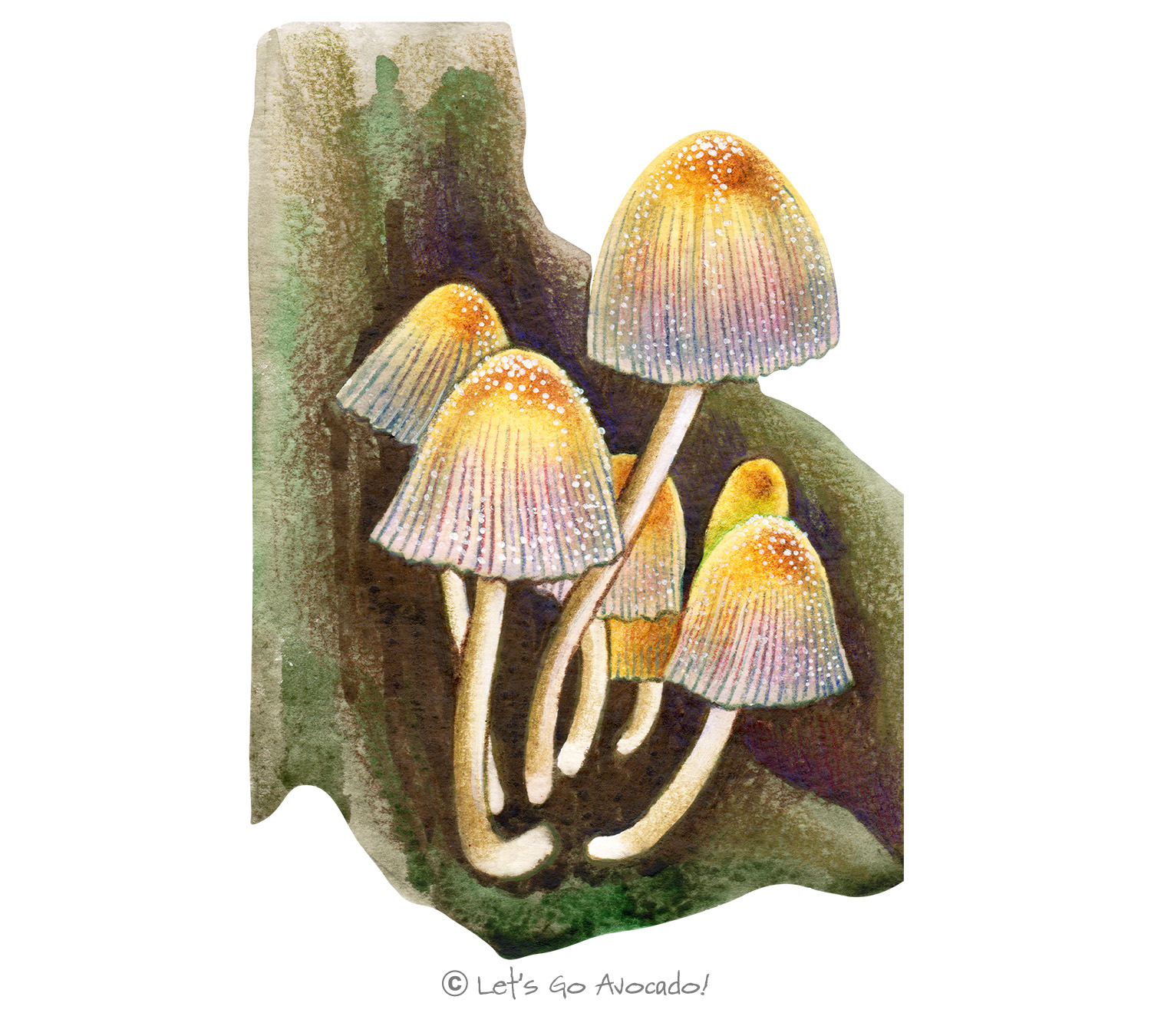

Mica Cap
Shiny Cap, Glistening Inky Cap
Coprinellus micaceus
This page may contain affiliate links.
Read our disclosure and privacy policy here.
The mica cap mushroom is a small, delicate fungus recognized for its tendency to grow in clusters on decaying wood. It is named for the shiny, mica-like granules on its cap surface when young. These mushrooms are commonly found in woodlands and urban areas alike.
Mica Cap
Common Name
Mica Cap
Other Names
Shiny Cap, Glistening Inky Cap
Latin Name
Coprinellus micaceus
Distribution
This mushroom is cosmopolitan, found throughout North America, Europe, Asia, and other parts of the world.
Appearance
The cap is bell-shaped, starting out as a deep brown and becoming tan or buff as it matures. The surface is sprinkled with glistening, mica-like particles when young. As it ages, the edges of the cap start to liquefy, turning into a black, inky substance.
Size
The cap is typically 1 to 4 cm in width, and the stem is around 8 to 10 cm tall.
Habitat
Mica caps prefer growing on decaying wood, especially hardwoods. They can often be found on stumps, logs, and other woody debris in both forests and urban areas.
Diet
Saprotrophic, deriving its nutrients from decaying organic matter.
Lifecycle
The mica cap starts as a spore, which germinates into myceliumMycelium is like the ‘root’ or the ‘body’ of a fungus. Just as plants have roots, fungi have mycelium. It is made up of tiny thread-like structures called hyphae that spread out in the soil or other materials where the fungus grows. Learn More, colonizing suitable substrates like decaying wood. When conditions are right, the mycelium forms fruiting bodies, which mature, liquefy (deliquesce) and release spores. The process of deliquescence aids in spore dispersal.
Defense Mechanisms
While Coprinellus micaceus is edible when young, it is not considered highly desirable due to its small size and tendency to quickly turn inky. Moreover, it looks somewhat similar to some toxic species. Always ensure proper identification and never consume any wild mushroom unless it has been positively identified by an expert.
Ecological Importance
The mica cap plays a significant role in decomposing wood, which in turn helps recycle essential nutrients back into the soil and ecosystemAn ecosystem is a community of living organisms, like insects and birds, and non-living components, like water and rocks, that interact with each other in a specific area. Learn More.
ConservationThe act of protecting and preserving natural resources and the environment. Conservation efforts are important to protect beavers and their habitats. Status
Not officially evaluated, but they are considered common.

There’s a lot to explore right where we are, in our own neighborhoods and backyards! Join us while we get off the couch and explore the everyday wonders of nature, science, space, engineering, art, and anything else we stumble upon during on our adventures.







